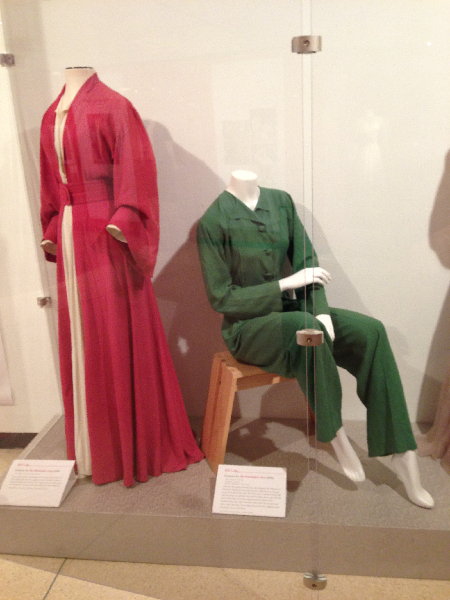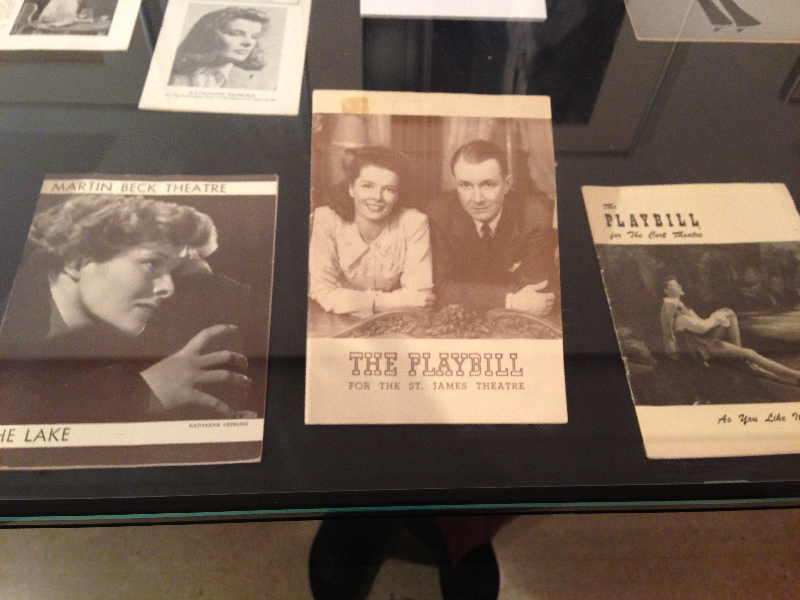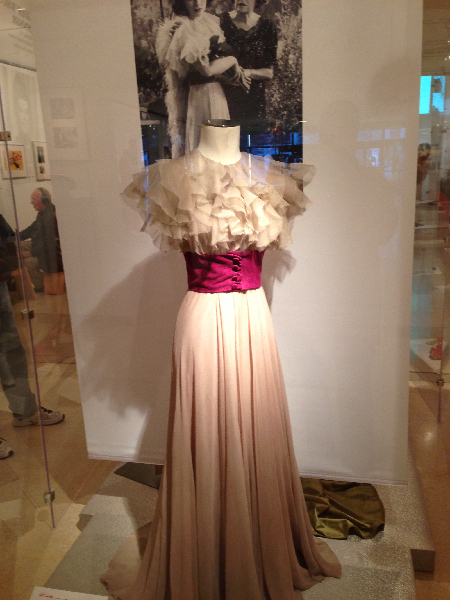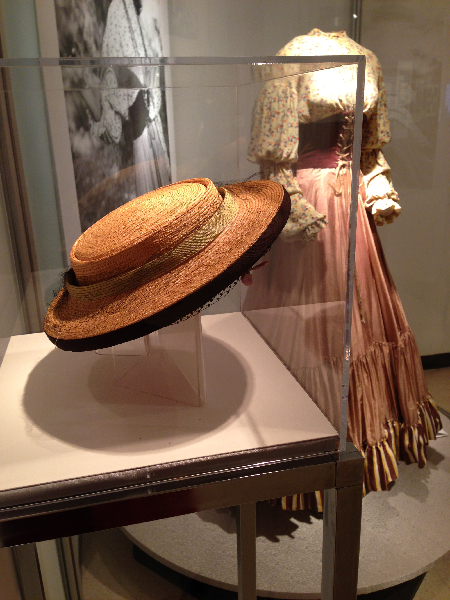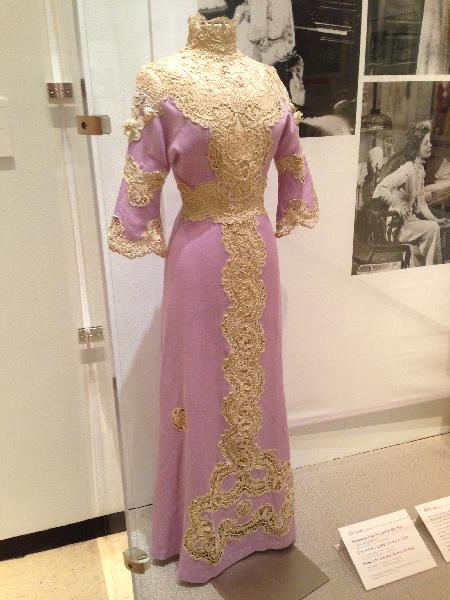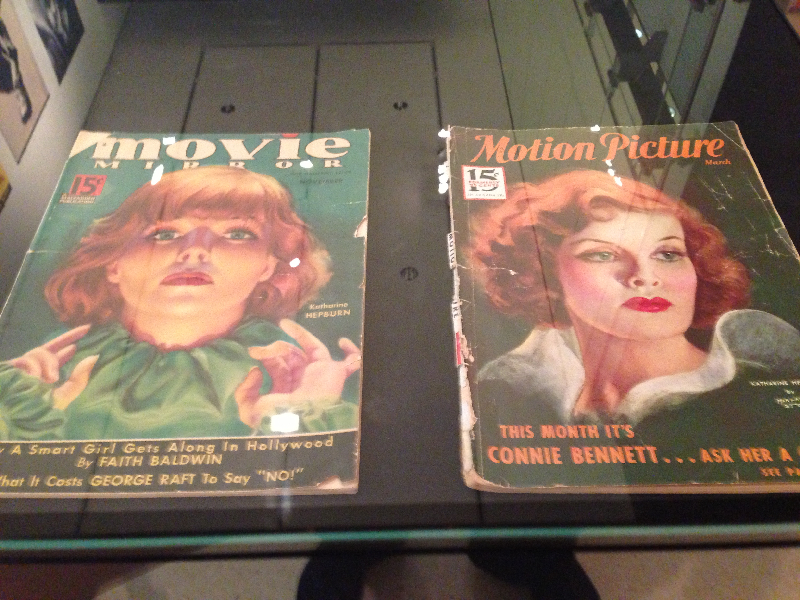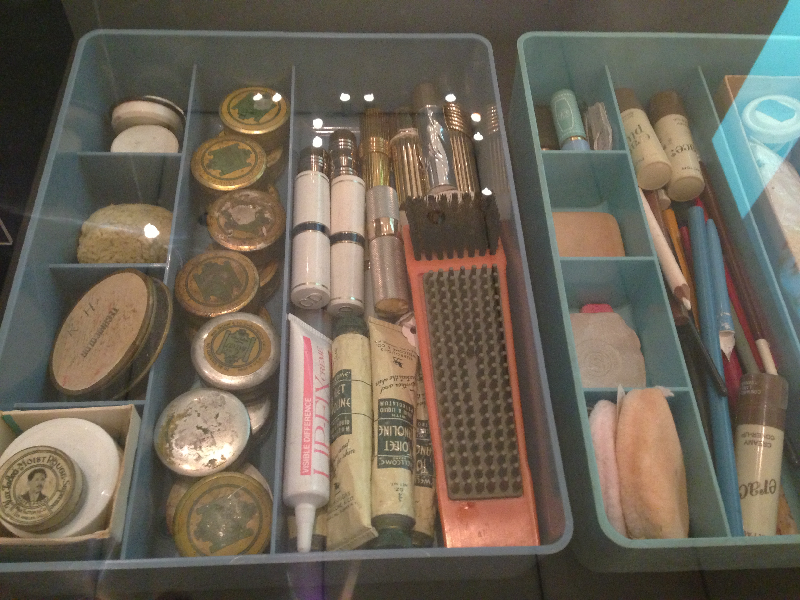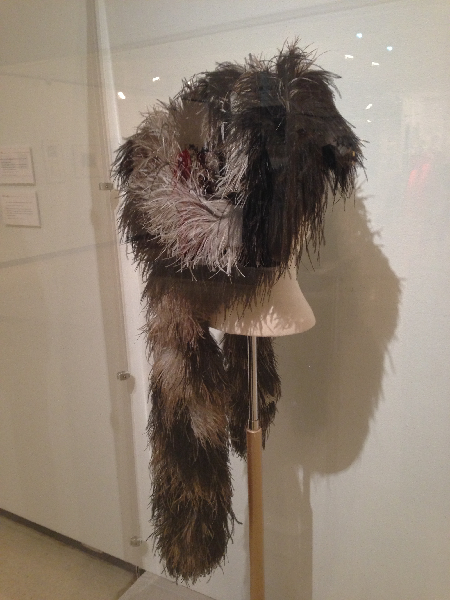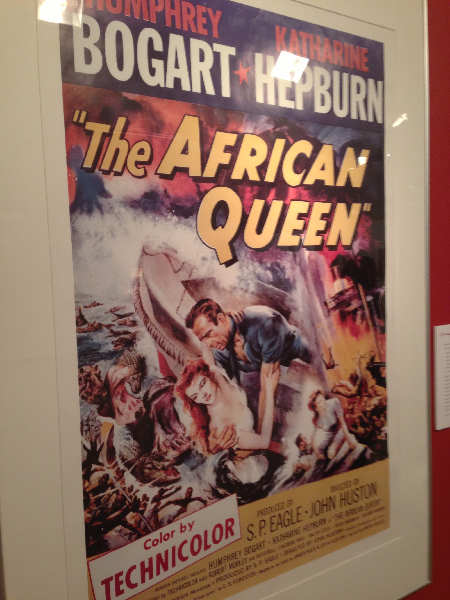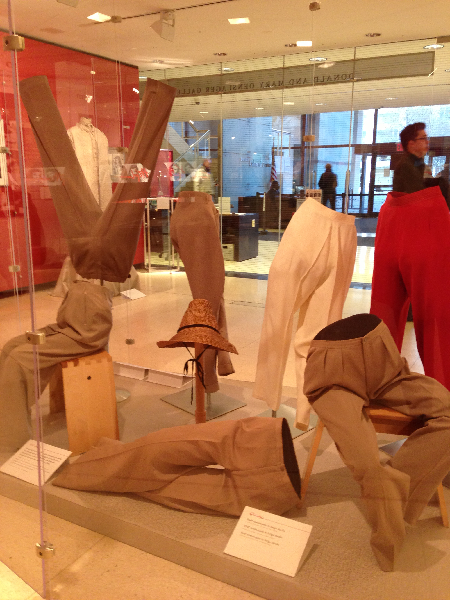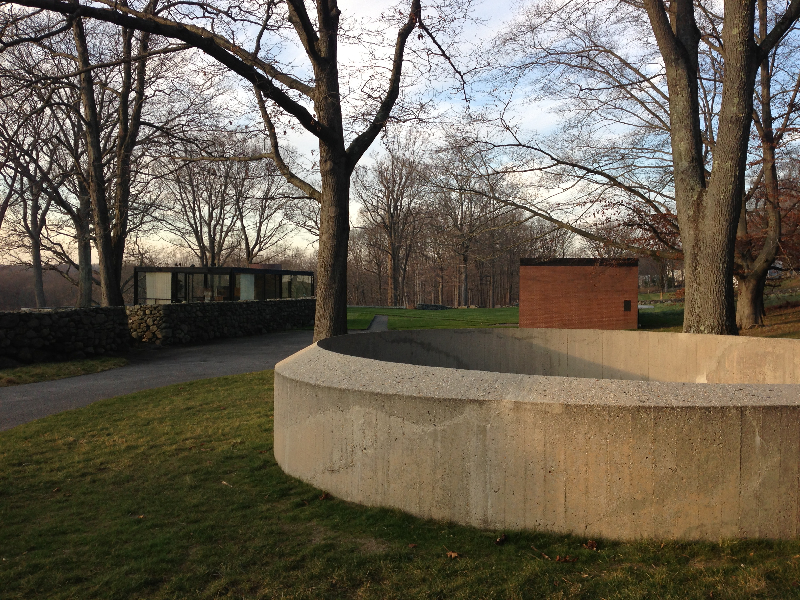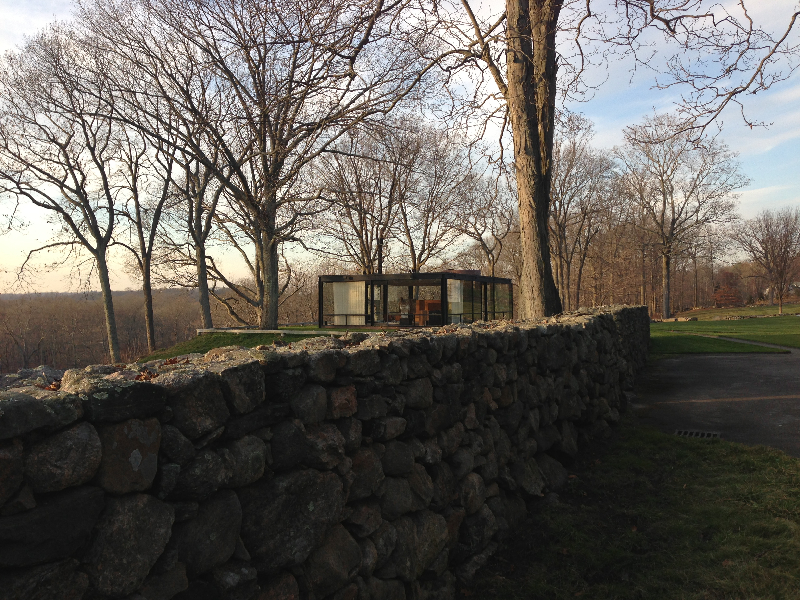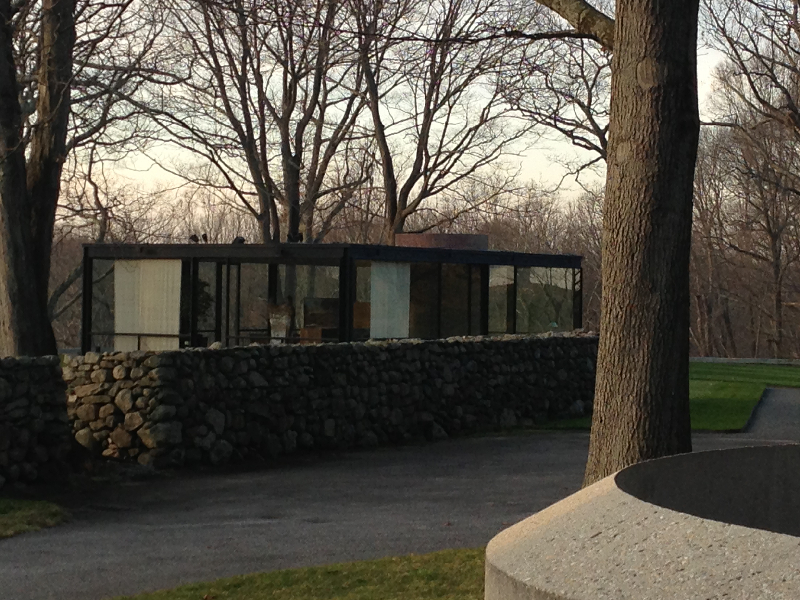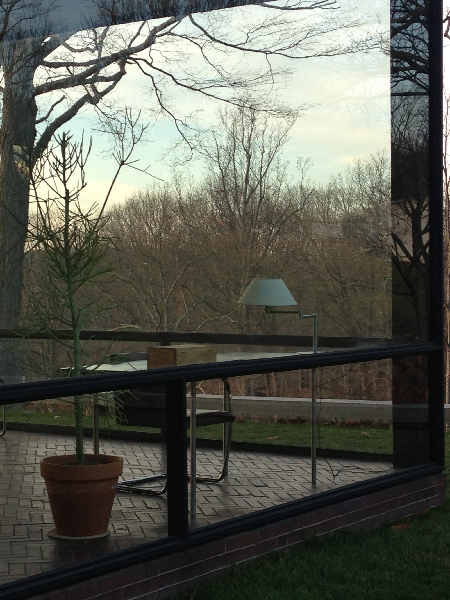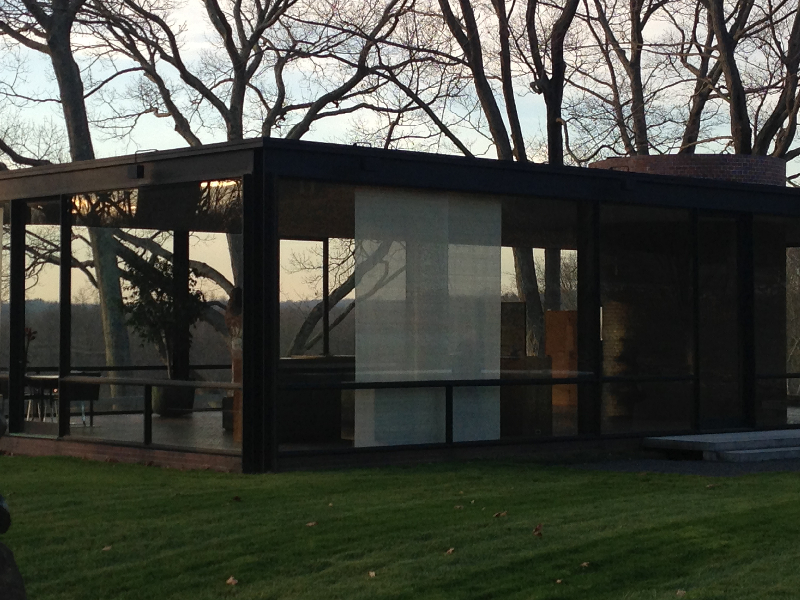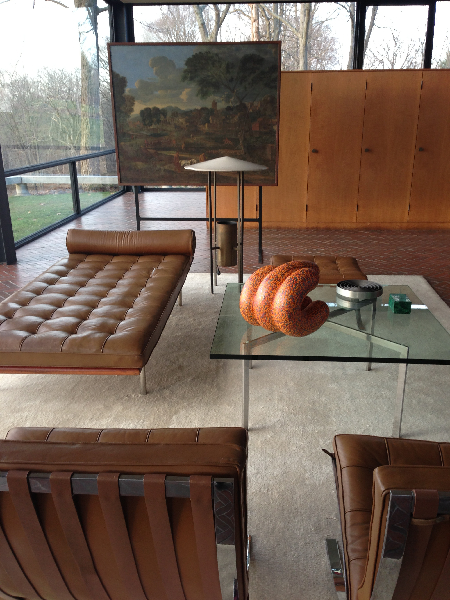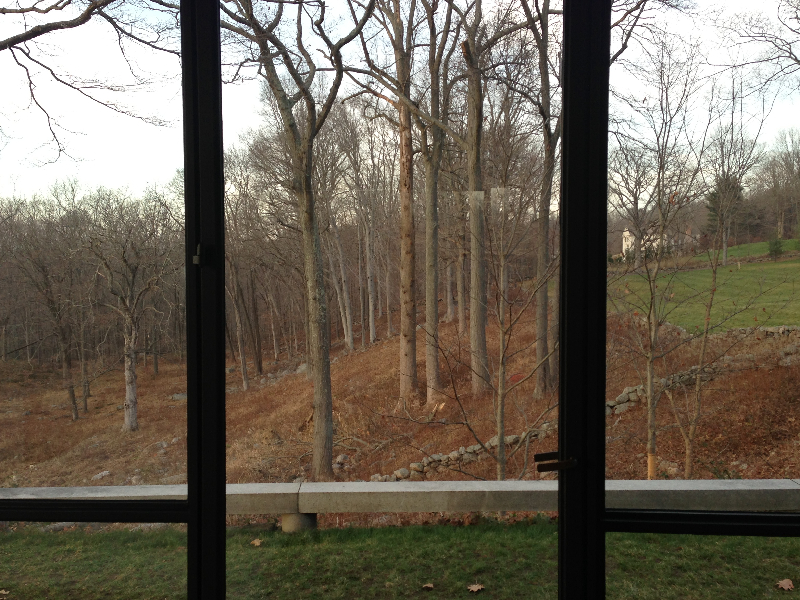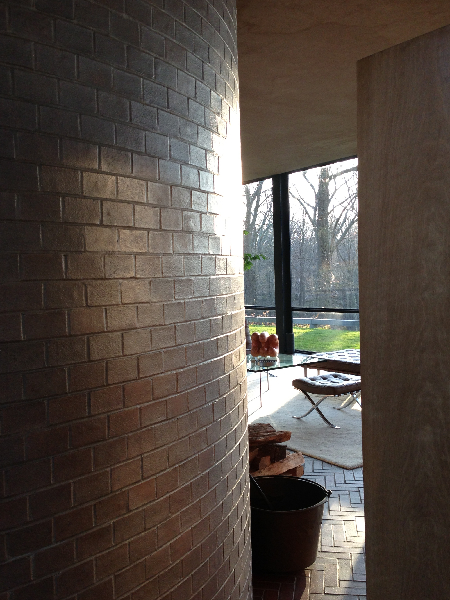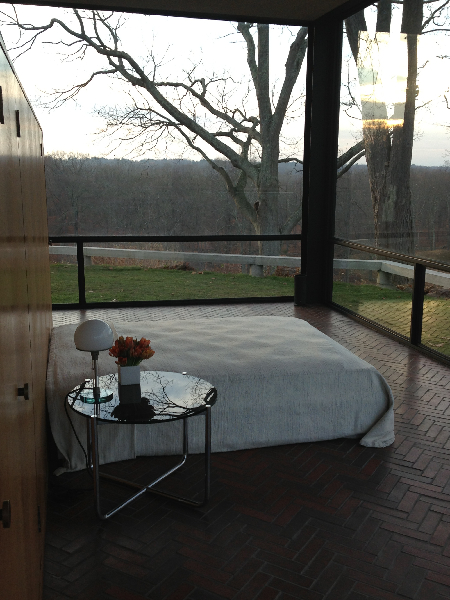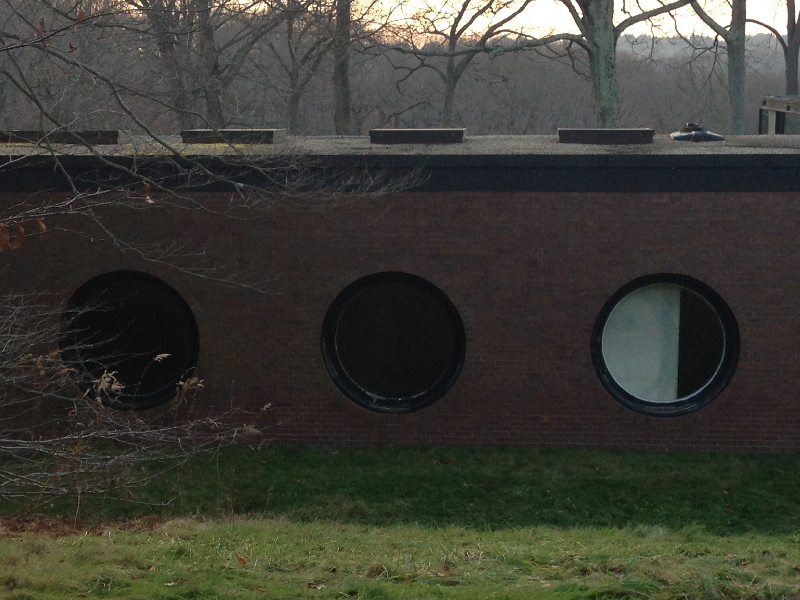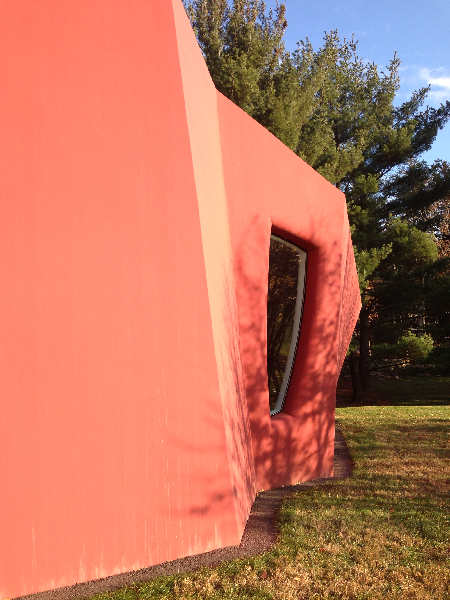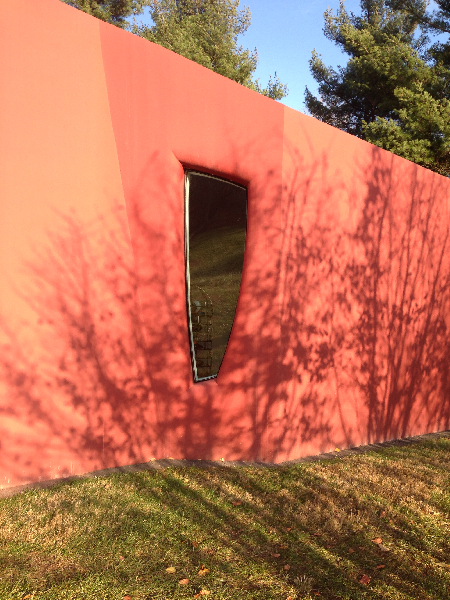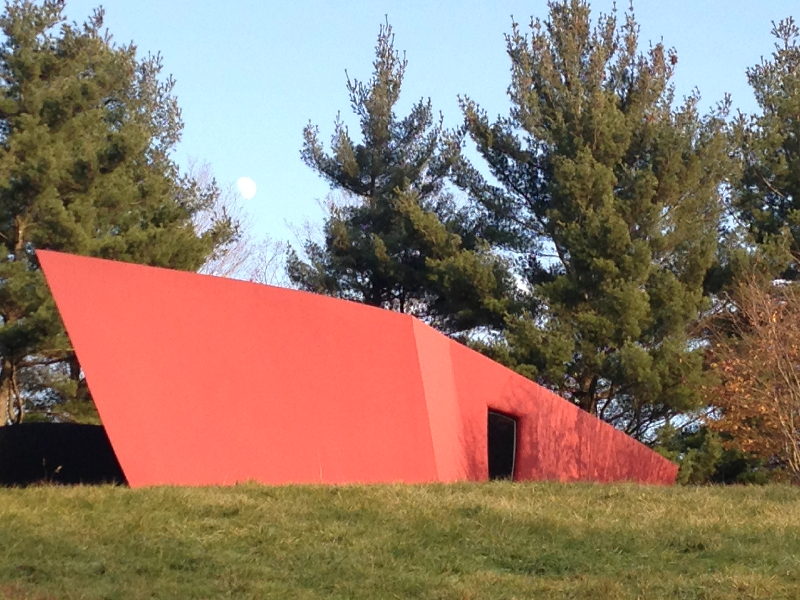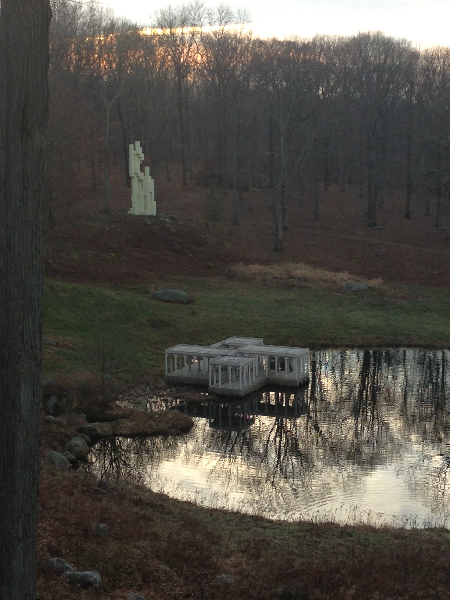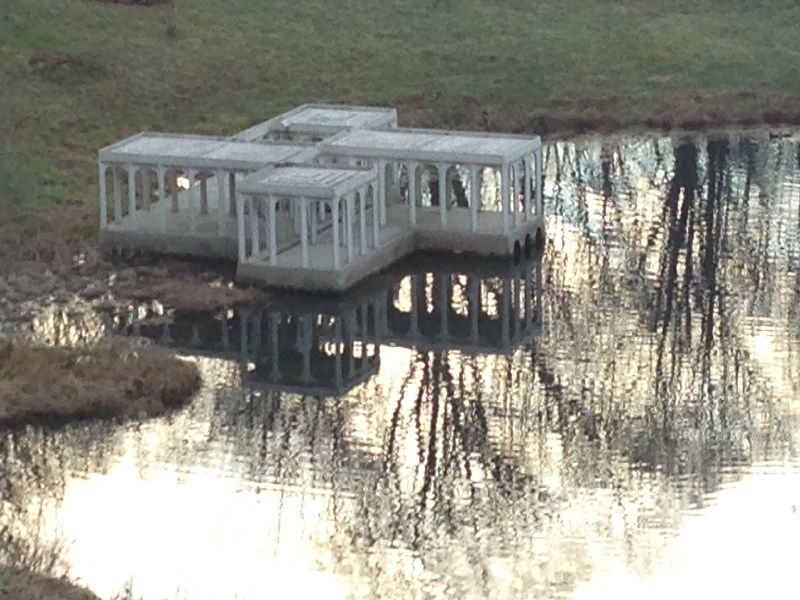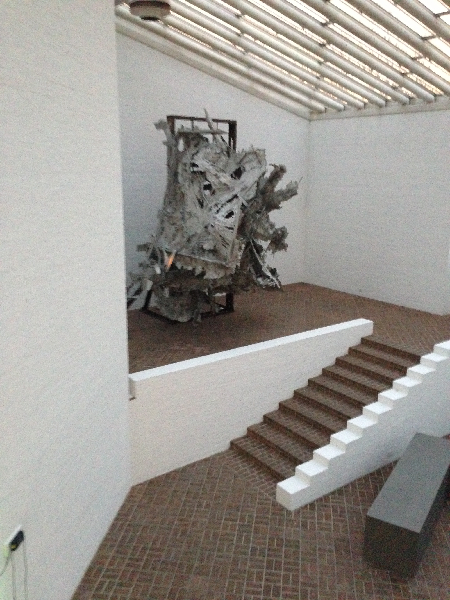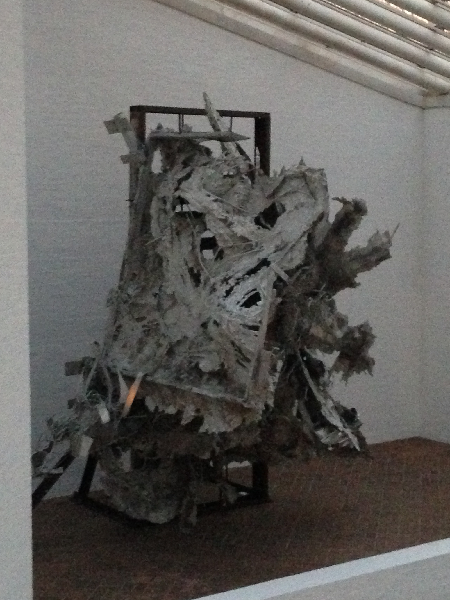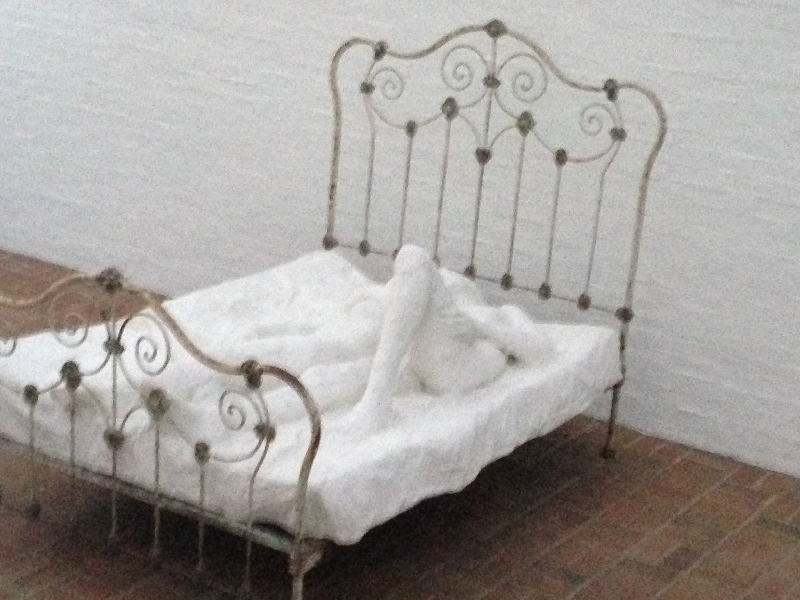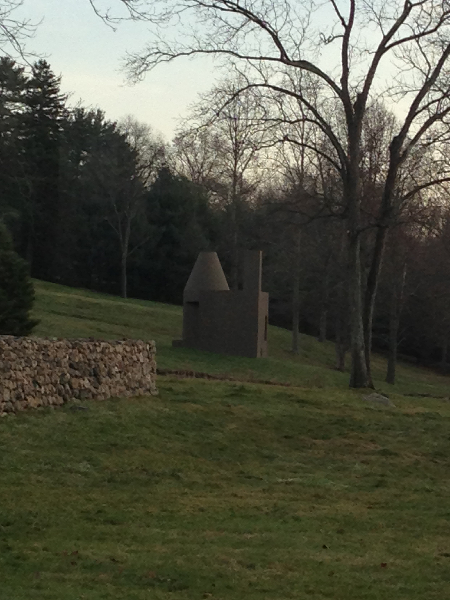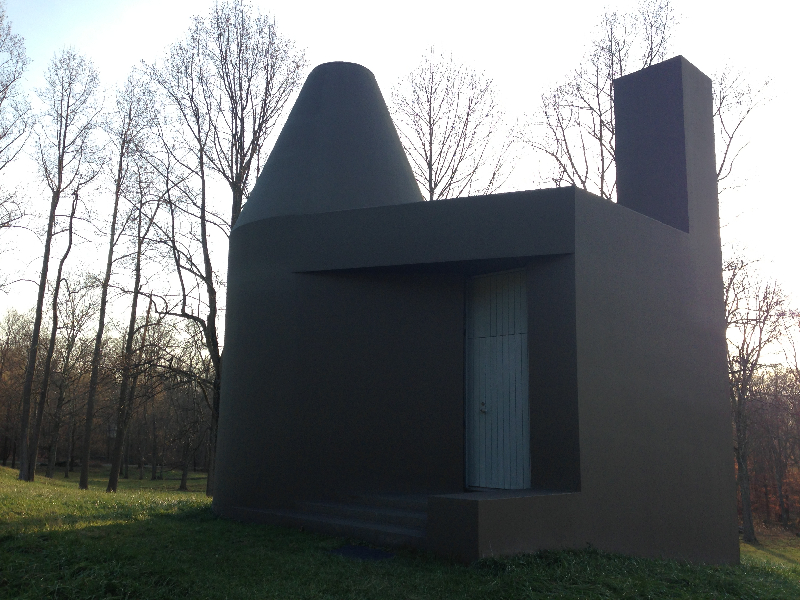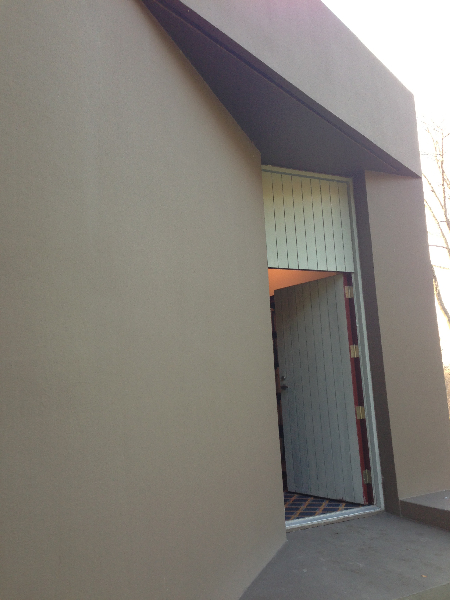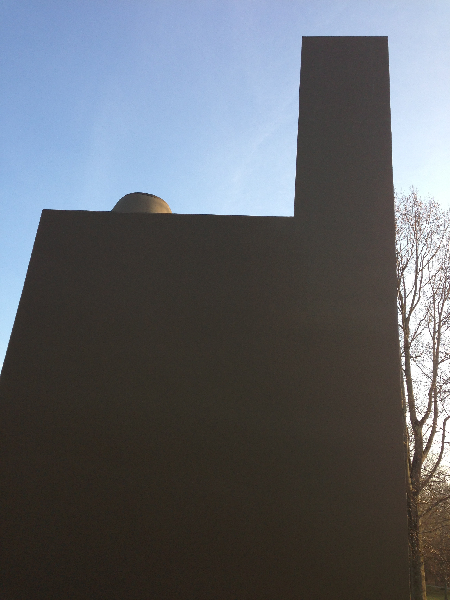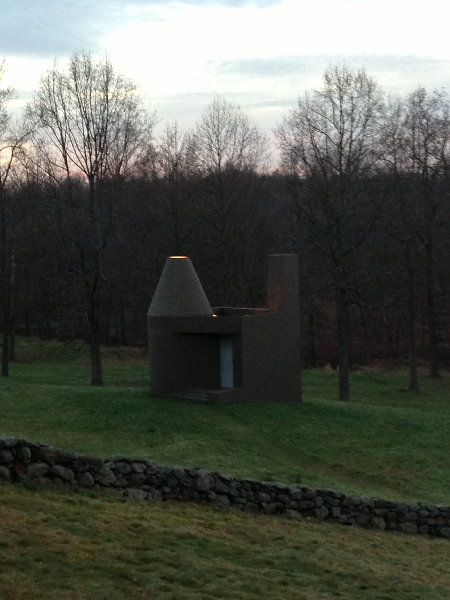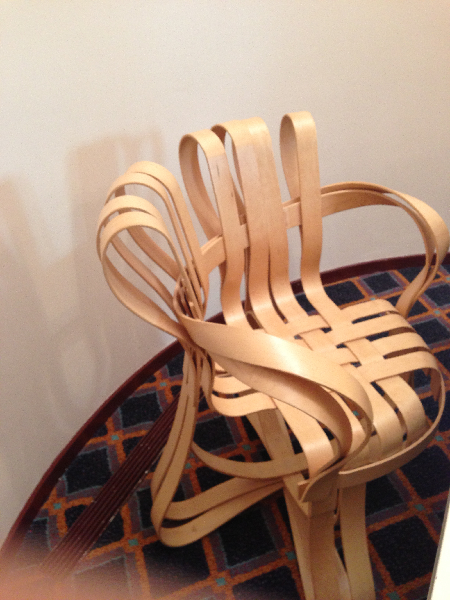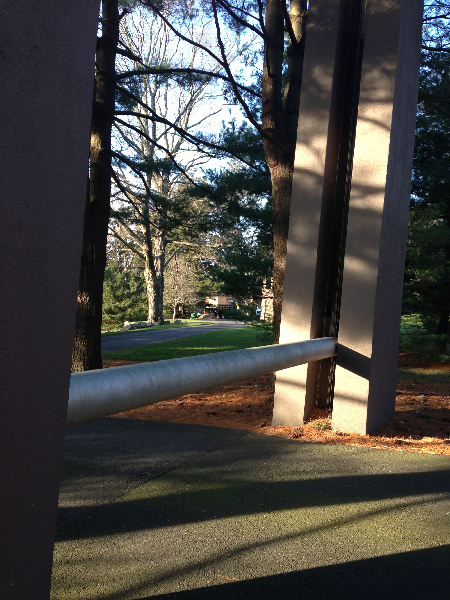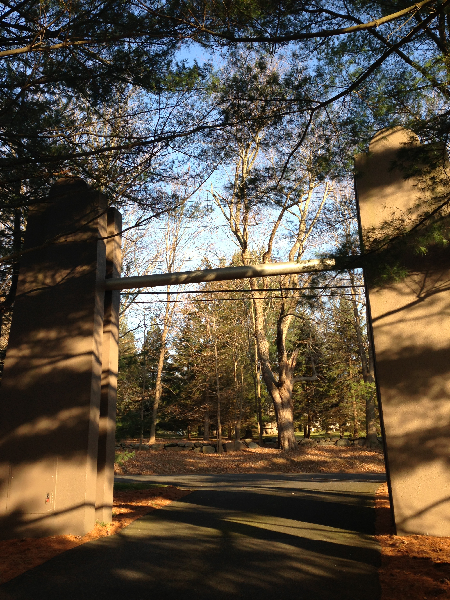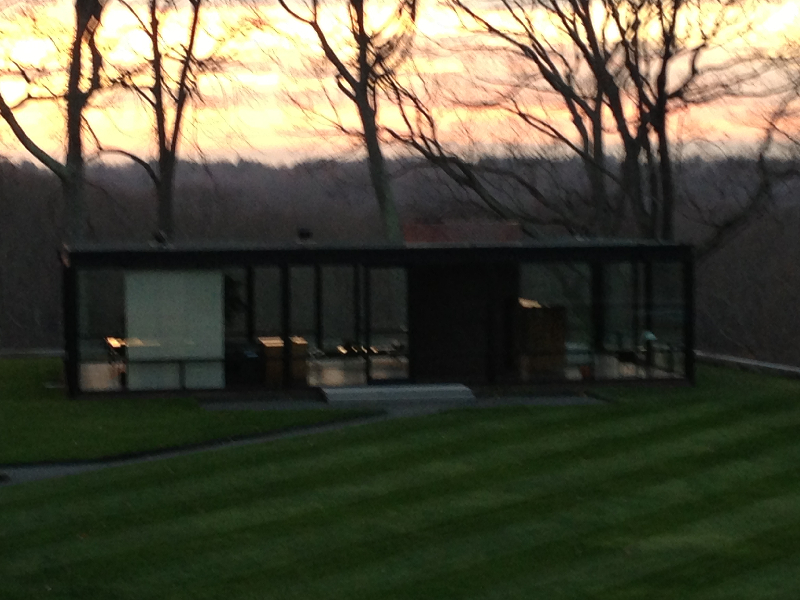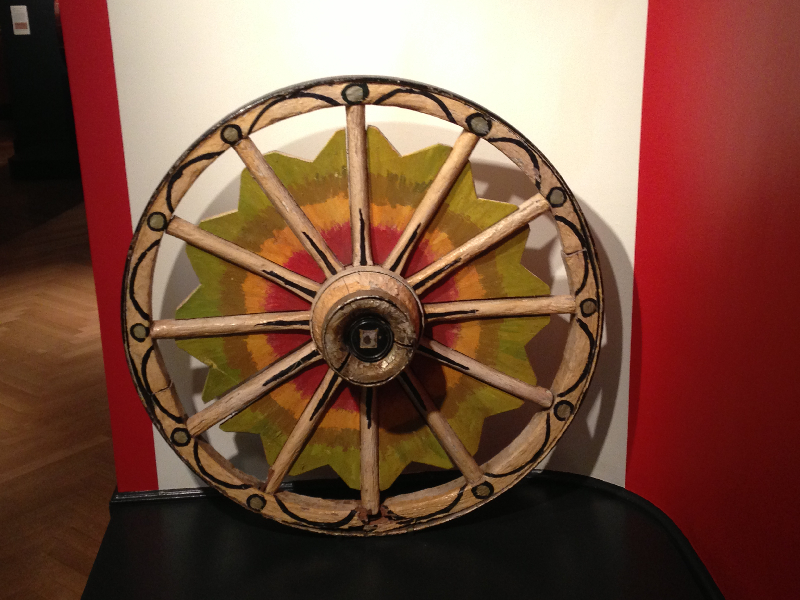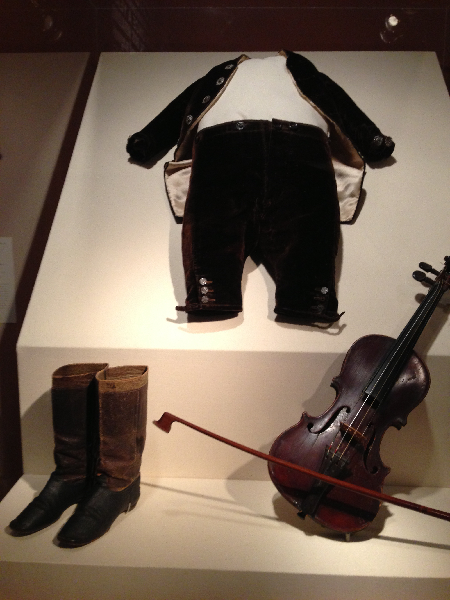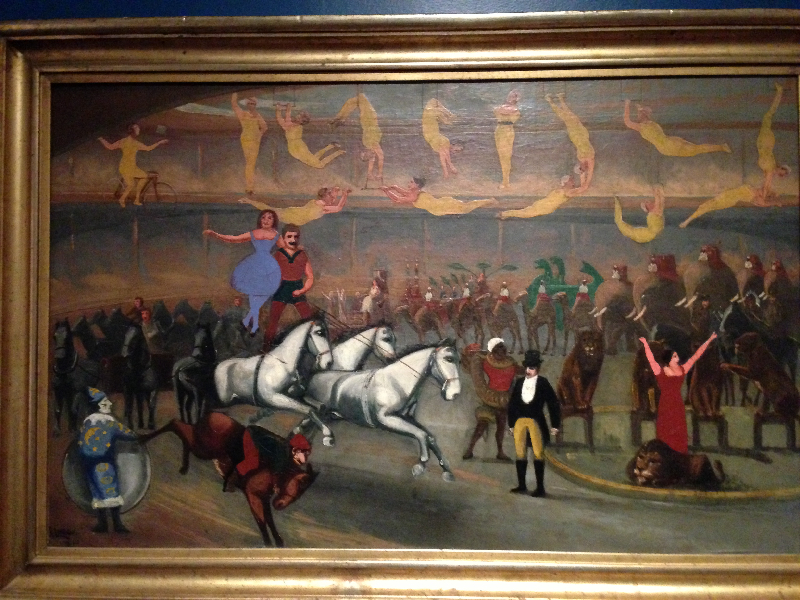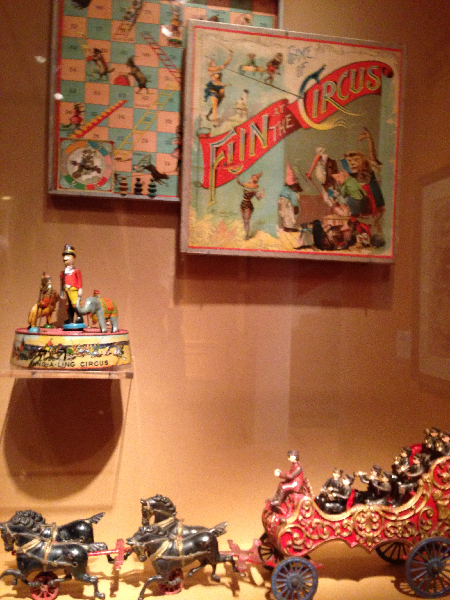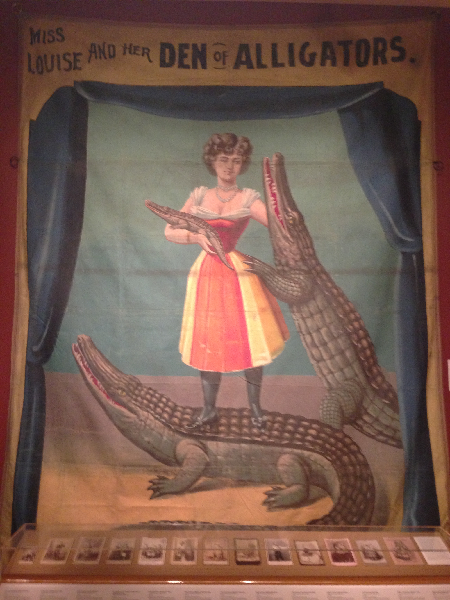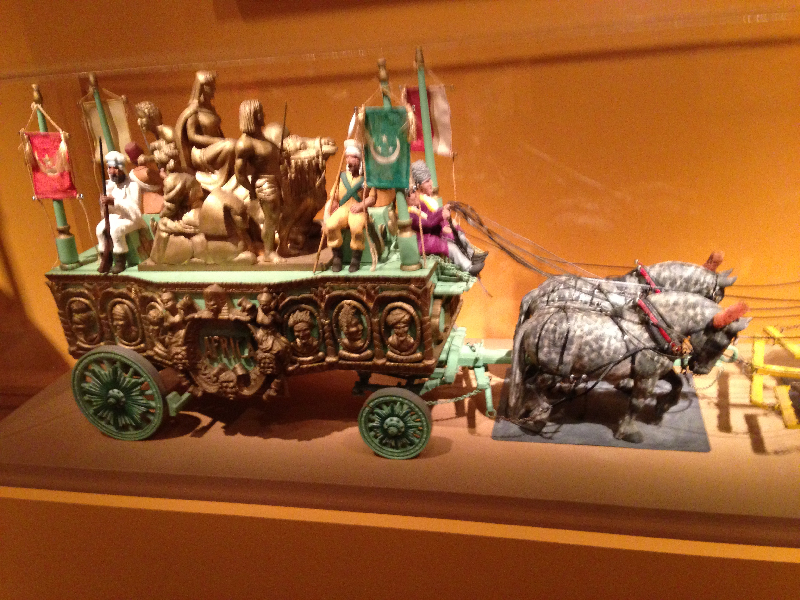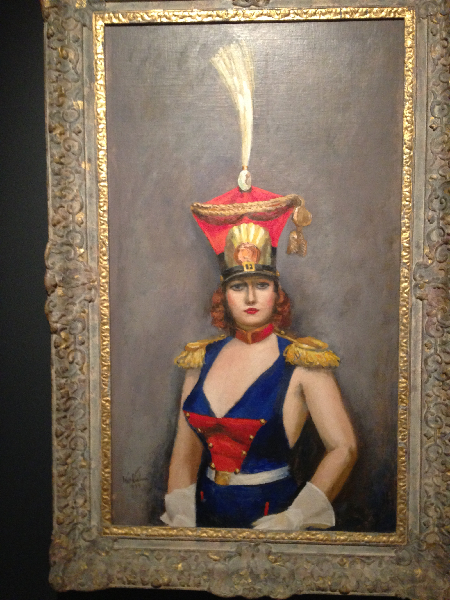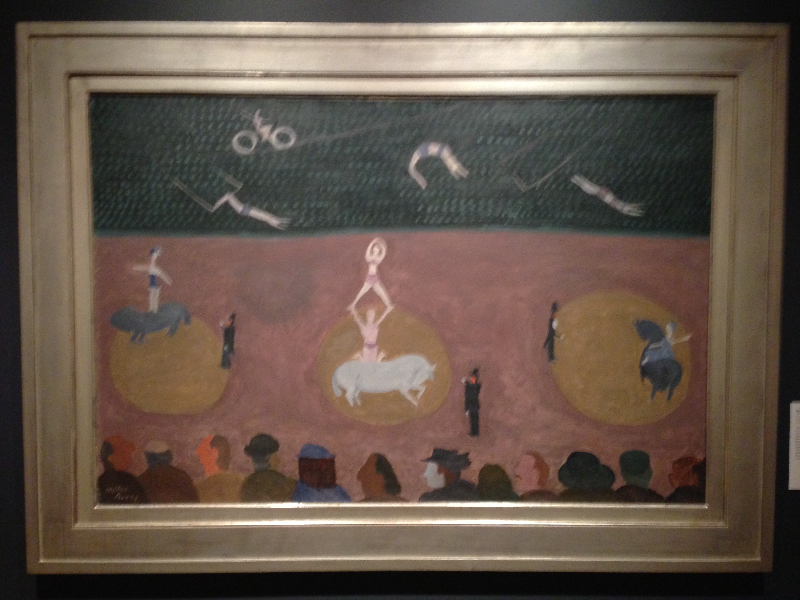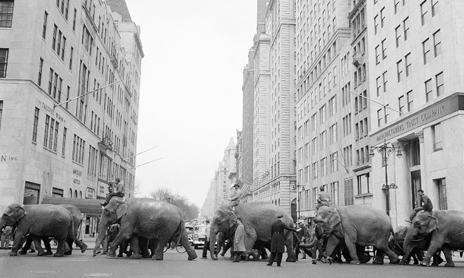Philip Johnson said, “You can only approach a house on an angle.” Eccentric, perhaps. But his architectural eye knew that approaching at a 45 degree angle shows the depth of the structure. Each of the eight structures on his grounds in New Canaan, CT are connected–visually, in repeated motifs, and through an angled, promenade approach.
The Glass House, from 1949, is only one of the phenomenons to see. Johnson, who proclaimed himself his own best client, considered the property a “50 year diary” in which he could experiment with new ideas.  As one of the great innovators of the International Style, Johnson broke free from the mid-century restrictions of glass and steel.
As one of the great innovators of the International Style, Johnson broke free from the mid-century restrictions of glass and steel.
Look at how as late as 1995, Johnson explores architecture as sculpture. The Frank Stella/Frank Gehry inspired Da Monsta is an organic red and black sculpture plopped at the entrance, near the Post-Modern gate (depicted in the slide show below). He said windows and doors could always be added later. Inside, there are no straight lines. The walls and ceiling are all angles and curves.

Corbusier, Ronchamp Chapel
The dimly lit interior is womb-like, with a sacred feeling, reminiscent of Corbusier’s Chapel at Ronchamp. Both Corbusier and Johnson move beyond the International Box to this sensual, textural, anti-glass-and-steel feel to something much more of the earth, spiritual in its essence. Perhaps the wisdom of age overcomes their youthful, masculine attempts to assert themselves against/over nature.
Johnson never lost the International-Style love of circles and squares, and the motifs are found all over the grounds. He imposed geometry on the terrain clearing out trees (he said, “In Connecticut, you can’t see the trees for the trees,” and never felt guilty for taking some out), sculpting the sight-lines he wanted. He had the grass cut in stripes. The trimmed the branches of the pine trees, so the needles would fall just the way he liked them.
Like an Earth artist, he constructed a tumulus, or burial mound, over his art gallery, when he decided he had added enough architecture.  But not before Donald Judd contributed his circular sculpture as part of the promenade to the Glass House. Across from the Glass House, you see the yang to its yin–the Brick House. Heavy. solid, private, the Brick House was ostensibly the guest house, but Johnson said “that’s where you have to go to ‘ball,’ if you remember that euphemism.” With guests like Andy Warhol, you can imagine what kind of love nest the Brick House must have been.
But not before Donald Judd contributed his circular sculpture as part of the promenade to the Glass House. Across from the Glass House, you see the yang to its yin–the Brick House. Heavy. solid, private, the Brick House was ostensibly the guest house, but Johnson said “that’s where you have to go to ‘ball,’ if you remember that euphemism.” With guests like Andy Warhol, you can imagine what kind of love nest the Brick House must have been.
The interior of the glass house gives you the stunning connection with nature you might expect, reminiscent of Frank Lloyd Wright’s Falling Water. But there were surprises in the interior as well. Not the Mies Van der Rohe furniture, not the Richard Kelly lighting, not the Ken Price sculptur e (all fabulous), but the Nicholas Poussin neoclassical architectural landscape, freestanding on an easel in the full sunlight, really was unexpected. Johnson lined the painting up so its horizon line acted as a continuation of nature’s horizon.
e (all fabulous), but the Nicholas Poussin neoclassical architectural landscape, freestanding on an easel in the full sunlight, really was unexpected. Johnson lined the painting up so its horizon line acted as a continuation of nature’s horizon.
But I can’t help wondering if there isn’t something just a bit passive-aggressive about taking a Poussin, which hung in his office at MoMA, and placing it in conservation-destroying, direct sunlight. The painting’s colors are dimmed, with paint flecking off to this day. His art collection, in the bunker, only seen in artificial life, features modernist and post-modernist friends and colleagues–Frank Stella, Julian Schnabel, Robert Rauschenberg, Michael Heiser, Cindy Sherman, you get the idea. Not a single artist working before 1945, except that poor, over-exposed Poussin.
 What I most resonated with in Johnson’s personality and themes is the idea of “Safe-Danger.” He built an eyebrow bridge that shakes slightly when we walk over it. He liked to think of the buildings as pods, each with its own purpose. But then he built a classically-inspired Folly (how Post Modern!), too small to stand up in comfortably, for picnics and such. In honor of his friend Lincoln Kirstein, he built a stairway to nowhere. A staffer climbed it, no handrails, for a video shown in the Visitor’s Center. Not for the faint of heart! See it, vertical sculpture-like, above the Folly?
What I most resonated with in Johnson’s personality and themes is the idea of “Safe-Danger.” He built an eyebrow bridge that shakes slightly when we walk over it. He liked to think of the buildings as pods, each with its own purpose. But then he built a classically-inspired Folly (how Post Modern!), too small to stand up in comfortably, for picnics and such. In honor of his friend Lincoln Kirstein, he built a stairway to nowhere. A staffer climbed it, no handrails, for a video shown in the Visitor’s Center. Not for the faint of heart! See it, vertical sculpture-like, above the Folly?
In 1967, Johnson hosted a “Country Happening” with Merce Cunningham and John Cage. I wonder if George Segal was there. In his sculpture gallery, Johnson has one of the Segal Lovers in Bed, a series of his more beautiful works. But before all this modern and post-modern art collection, Johnson was a mid-century man.  He moved to New Canaan to be near friends from his Harvard years, architects who shaped the town with 120 mid-century modernist homes. Ninety still survive today and are open for the occasional home tour. But that, alas, is for another day. The sun was setting, and tired girls had to board the train back to New York City.
He moved to New Canaan to be near friends from his Harvard years, architects who shaped the town with 120 mid-century modernist homes. Ninety still survive today and are open for the occasional home tour. But that, alas, is for another day. The sun was setting, and tired girls had to board the train back to New York City.
 “She kept everything, you know,” the woman told me. “A lock of her baby hair, her first school books. She was an eccentric.” While the woman didn’t know Kate personally, she saw her on the streets of the Upper East Side and went to the auction held after Hepburn passed away. I think many New Yorkers feel ownership about Kate, even though she seemed to identify with charming Old Saybrook, CT.
“She kept everything, you know,” the woman told me. “A lock of her baby hair, her first school books. She was an eccentric.” While the woman didn’t know Kate personally, she saw her on the streets of the Upper East Side and went to the auction held after Hepburn passed away. I think many New Yorkers feel ownership about Kate, even though she seemed to identify with charming Old Saybrook, CT. on screen was teensy. Of course, she always looked slim on celloid, but really. The size of the pants and dresses make me feel hugely dinosauric. Even in the late 1940s, when she was in her 40s, she had a waist size of 20 inches, and the gowns look even smaller than that.
on screen was teensy. Of course, she always looked slim on celloid, but really. The size of the pants and dresses make me feel hugely dinosauric. Even in the late 1940s, when she was in her 40s, she had a waist size of 20 inches, and the gowns look even smaller than that.
